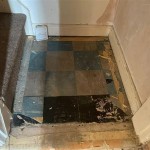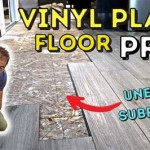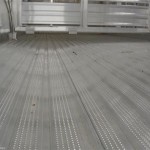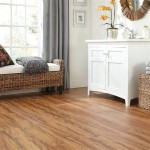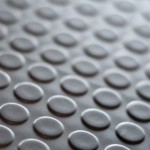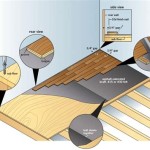Quick-Step Laminate Flooring Reviews: An In-Depth Look
Quick-Step laminate flooring has established itself as a prominent player in the flooring industry. Its reputation stems from a combination of durability, aesthetic versatility, and ease of installation. This article presents a comprehensive review of Quick-Step laminate flooring, examining various aspects to provide potential buyers with a detailed understanding of the product's strengths and weaknesses.
The review will delve into the construction and materials used in Quick-Step laminate, assess its performance in different environments, explore the range of styles and designs available, and consider factors like installation, maintenance, and overall value. By covering these key areas, a clearer picture of what Quick-Step laminate offers to consumers can be formed.
Laminate flooring, in general, is a multi-layered synthetic flooring product fused together through a lamination process. It simulates the appearance of other materials, such as wood, stone, or tile, while offering enhanced durability and often a lower price point. Quick-Step utilizes high-density fiberboard (HDF) as its core material, which contributes to its strength and stability. The top layer is a printed decorative layer that determines the floor's appearance, protected by a clear, durable wear layer that resists scratches, stains, and fading.
Construction and Materials: A Foundation for Performance
The core of Quick-Step laminate flooring relies heavily on HDF. The quality and density of the HDF directly impact the floor's resistance to moisture, impact, and overall stability. Higher-density HDF cores are generally more resistant to water damage and warping, making them suitable for areas with moderate moisture exposure. The thickness of the HDF core also contributes to the floor's structural integrity and its ability to withstand heavy foot traffic. Quick-Step typically offers different thicknesses to cater to varying levels of traffic and application requirements.
Above the HDF core is the decorative layer. Quick-Step employs advanced printing technologies to create realistic and detailed visuals that mimic natural materials. The quality of the printing process directly affects the authenticity of the appearance. Higher-quality prints feature richer colors, more intricate grain patterns, and greater variation between planks, resulting in a more natural and less repetitive look.
The wear layer, also known as the overlay, is the topmost layer that protects the decorative layer from wear and tear. It is typically made of aluminum oxide or melamine resin, which are known for their hardness and resistance to abrasion. The thickness and quality of the wear layer are crucial factors determining the floor's durability and longevity. Quick-Step offers different wear layer ratings, often measured in AC (Abrasion Class) ratings, which indicate the floor's resistance to wear in commercial and residential settings. Higher AC ratings signify greater durability and suitability for high-traffic areas.
Quick-Step also incorporates patented technologies such as HydroSeal, which provides enhanced water resistance. This technology involves coating the edges and surface of the planks to prevent water from penetrating the core, reducing the risk of swelling and damage. The effectiveness of HydroSeal and similar technologies depends on proper installation and maintenance, as well as the level and duration of water exposure.
Performance and Suitability for Different Environments
The performance of Quick-Step laminate flooring is largely determined by its construction and the quality of its materials. Its resistance to scratches, stains, and fading is a key factor in its overall appeal. The wear layer plays a critical role in resisting scratches from pets, furniture, and everyday foot traffic. A thicker and higher-quality wear layer will generally provide superior protection against scratches and scuffs.
Stain resistance is another important consideration, particularly for areas prone to spills and messes. Quick-Step laminate is typically treated with a stain-resistant coating that prevents liquids and stains from penetrating the surface. However, it is still important to clean up spills promptly to prevent permanent staining. The effectiveness of the stain-resistant coating can vary depending on the type of stain and the duration of exposure.
Fading resistance is crucial for maintaining the floor's appearance over time, especially in areas with direct sunlight exposure. Quick-Step laminate is designed to resist fading from UV rays, but prolonged and intense exposure can still cause some color changes. Using curtains or blinds to filter sunlight can help prolong the floor's vibrant appearance.
Moisture resistance is a critical factor for areas like bathrooms, kitchens, and basements. While Quick-Step offers water-resistant technologies like HydroSeal, laminate flooring is generally not considered waterproof. Excessive moisture exposure can still lead to swelling, warping, and other damage. It is important to choose appropriate products and take precautions to minimize moisture exposure in these areas. Proper ventilation and prompt cleanup of spills are essential for maintaining the floor's integrity.
The suitability of Quick-Step laminate for different environments also depends on the expected level of foot traffic. Higher-traffic areas, such as hallways, living rooms, and commercial spaces, require flooring with a higher AC rating. Lower-traffic areas, such as bedrooms and closets, can often use flooring with a lower AC rating. Choosing the appropriate AC rating for the intended use is essential for ensuring the floor's longevity and performance.
Styles, Designs, and Aesthetic Versatility
Quick-Step laminate flooring offers a wide range of styles and designs to suit various aesthetic preferences. The available options include realistic wood-look planks, stone-look tiles, and even creative patterns. The wood-look planks are particularly popular, offering a cost-effective alternative to hardwood flooring.
The realism of the wood-look planks is enhanced by features such as embossed-in-register textures, which match the texture of the surface to the printed grain pattern. This creates a more authentic look and feel that closely mimics the appearance of natural wood. Some Quick-Step laminate floors also feature beveled edges, which further enhance the realism by creating distinct grooves between the planks, similar to traditional hardwood floors.
The color palette offered by Quick-Step is extensive, ranging from light and airy neutrals to dark and rich tones. This allows consumers to find a color that complements their existing décor and creates the desired ambiance in their space. The color options also include a variety of wood species, such as oak, maple, hickory, and walnut, each with its unique grain patterns and color variations.
In addition to wood-look planks, Quick-Step also offers stone-look tiles that mimic the appearance of natural stone materials like slate, marble, and travertine. These tiles can add a touch of elegance and sophistication to any room, and they are particularly well-suited for kitchens, bathrooms, and entryways. The stone-look tiles often feature realistic textures and patterns that replicate the natural variations found in stone.
Quick-Step also provides options for different plank widths and lengths, allowing consumers to customize the look of their floor. Wider planks can create a more spacious and modern feel, while narrower planks can create a more traditional and classic look. Longer planks can also help to minimize the number of seams in the floor, creating a more seamless and visually appealing surface.
The aesthetic versatility of Quick-Step laminate flooring makes it a suitable choice for a wide range of interior design styles, from traditional to contemporary. Whether the goal is to create a warm and inviting space or a sleek and modern aesthetic, Quick-Step offers options to meet diverse design needs.
Installation, Maintenance, and Overall Value
Installation of Quick-Step laminate flooring is generally considered to be relatively straightforward, particularly for homeowners with some DIY experience. The majority of Quick-Step laminate floors feature a click-lock system that allows the planks to be easily connected without the use of glue or nails. This simplifies the installation process and reduces the risk of errors.
However, proper preparation is essential for a successful installation. The subfloor must be clean, level, and dry before installing the laminate flooring. Any imperfections in the subfloor can cause unevenness and instability in the finished floor. It is also important to install an underlayment beneath the laminate flooring to provide cushioning, sound insulation, and moisture protection. Quick-Step offers a range of underlayment options to suit different needs and budgets.
While DIY installation is possible, professional installation is recommended for those who lack experience or are unsure about their abilities. Professional installers have the knowledge and tools necessary to ensure a proper and long-lasting installation. They can also address any potential issues with the subfloor or other aspects of the installation process.
Maintenance of Quick-Step laminate flooring is relatively easy and requires minimal effort. Regular sweeping or vacuuming is sufficient to remove dirt and debris. For deeper cleaning, a damp mop can be used with a mild detergent. It is important to avoid using excessive water, as this can damage the laminate flooring. Harsh chemicals and abrasive cleaners should also be avoided, as they can damage the wear layer and dull the finish.
Preventative measures can also help to prolong the life of Quick-Step laminate flooring. Using floor protectors under furniture legs can prevent scratches and dents. Placing mats at entrances can trap dirt and debris before they are tracked onto the floor. Promptly cleaning up spills can prevent stains and water damage.
The overall value of Quick-Step laminate flooring is determined by its combination of durability, aesthetics, ease of installation, and price. While laminate flooring is generally less expensive than hardwood or natural stone, the price of Quick-Step laminate can vary depending on the quality, style, and features of the product. It is important to compare prices and consider the long-term value of the flooring when making a purchase decision. The cost of installation, underlayment, and other accessories should also be factored into the overall cost.
Quick-Step laminate flooring offers a compelling combination of affordability, durability, and aesthetic appeal. Its wide range of styles and designs, along with its ease of installation and maintenance, make it a popular choice for homeowners and businesses alike. However, it is important to carefully consider the specific needs and requirements of the space when choosing Quick-Step laminate flooring to ensure that it is the right fit.

Why I Chose Quick Step Impressive Ultra For Our New Floors The Interiors Addict

Why I Chose Quick Step Impressive Ultra For Our New Floors The Interiors Addict

Quick Step Laminate Flooring Review Is It Worth The Hype

Why I Chose Quick Step Impressive Ultra For Our New Floors The Interiors Addict

Quick Step Laminate Flooring Review Is It Worth The Hype

Quickstep Flooring Review Miss Mustard Seed

Quick Step Laminate Flooring Reviews S Pros Cons Vs Other Brands 2024

Quick Step Country Review

Why I Chose Quick Step Impressive Ultra For Our New Floors The Interiors Addict

Quick Step Laminate Flooring Review Is It Worth The Hype
Related Posts


